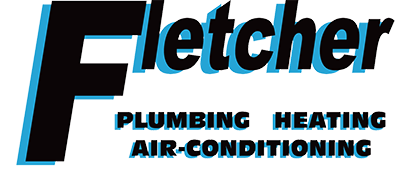
A furnace is almost always a background player for your home, ensuring you're warm across the cold winter months. It often won't be noticed until something goes wrong.
One root cause might be that your furnace has a cracked heat exchanger. It’s a potentially dangerous issue, so it’s important to know the symptoms of a cracked heat exchanger and what you can do if you believe that might be the problem.
What Is a Heat Exchanger in a Furnace?
A heat exchanger helps transition heat from the combustion chamber of your furnace to the air that moves throughout the system. It typically accomplishes this using coils or tubes that heat the air while serving as a barrier to keep gas created in the combustion chamber, called flue gasses, from leaking out into your home.
Is a Cracked Heat Exchanger Dangerous?
Thanks to its key role, it isn't surprising that a damaged heat exchanger can be hazardous. Cracks in the heat exchanger can enable dangerous gasses – such as carbon monoxide, which can be lethal – to flow throughout your home.
For obvious reasons, do NOT use your furnace if you suspect you're dealing with a cracked heat exchanger, as doing so could make the whole family ill. Call an HVAC professional immediately if you are worried your heater has a cracked heat exchanger that needs repair.
Four Symptoms of a Cracked Heat Exchanger:
- Furnace shuts off: A crack in your heat exchanger could cause your furnace to shut off.
- Odd Smells: If the air escaping your furnace has a strong chemical scent, it could be an indicator that gasses are seeping through cracks in your heat exchanger. These byproducts, which may smell like formaldehyde, are a common warning sign.
- Carbon monoxide alarm goes off or you recognize poisoning symptoms: If a cracked heat exchanger is releasing carbon monoxide into your home, your carbon monoxide alarm should go off or family members might struggle with signs of carbon monoxide poisoning. Side effects include headaches, dizziness, weakness, nausea, vomiting or feeling tired. If the alarm goes off or you feel sick, leave the home as soon as you can and then call for help.
- Soot: If you notice black sooty collecting around the exterior of your furnace, it’s an indication something could be seriously wrong.
What You Can Do if Your Furnace Heat Exchanger is Cracked
If you believe your furnace has a cracked heat exchanger, contact a professional experienced in furnace installation Smyrna right away so they can inspect your system and, if needed, perform a furnace heat exchanger replacement. Costs will vary depending on the situation, but estimates often hover around $1,000 to $3,000.
However, the good news is that heat exchangers are generally covered by the warranty. You’ll want to check the warranty paperwork on your furnace, since while the warranty might not cover the entire cost of repairs, it still may significantly reduce your bill.
How to Avoid a Cracked Heat Exchanger in Your Home
One of the most convenient ways to prevent a problem in your furnace overall is through consistent furnace maintenance. Furnaces provide the best possible return on investment when they run efficiently. Hiring a trained professional to examine your furnace for old parts, clogged filters and other likely problems can help you avoid getting a big bill later on.
It’s also a good idea to take a look at your furnace filters every few months – it’s recommended some filters be changed every 90 days or sooner if they are dirty or grimy. While the filters aren't a part of the heat exchanger itself, the strain of dragging air through a clogged filter makes your entire furnace work longer to complete its job. And the harder your furnace works, the more strain components like the heat exchanger will experience.
